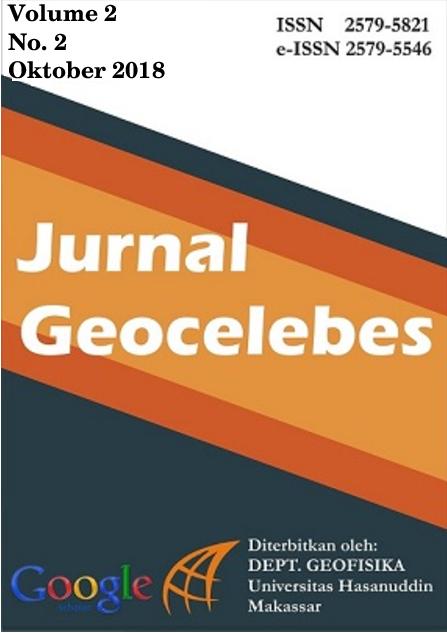KARAKTERISTIK ENDAPAN SINTER TRAVERTIN PANAS BUMI BARASANGA KABUPATEN KONAWE UTARA, SULAWESI TENGGARA
DOI:
https://doi.org/10.20956/geocelebes.v2i2.4830Abstract
Daerah Barasanga menunjukkan manifestasi panasbumi berupa mataair panas dan endapan travertin. Travertin merupakan batuan karbonat yang terbentuk di darat akibat pelepasan CO2 dari air jenuh kalsium karbonat. Travertin memiliki banyak aplikasi namun di Indonesia belum banyak dipelajari. Penelitian ini dilakukan dengan cara observasi lapangan secara langsung, kemudian data yang telah diambil dari lapangan dianalisis menggunakan analisis petrografi. Air hidrothermal naik ke permukaan melalui rekahan yang dibentuk sesar, dan melewati batuan samping berupa marls dan batugamping tersebut. Ketika mencapai ke permukaan, CO2 lepas dan tingkat kelarutan semakin rendah sehingga pengendapan travertin terjadi. Hasil penelitian menunjukkan bahwa tipe dan jenis travertin pada mataair panas di daerah penelitian termasuk ke dalam jenis Incoherent Travertines.Downloads
References
Browne, P.R. L. (1991). Minerological guides to interpreting the shawllow paleohydrology of epitermal mineral depositing enviroments. Proc.13 th NZ Geothermal workshop, Auckland pp 263-270 NZ.Eisenstuck, M., (1949). Die Kalktuffe der mittleren Schwabischen AIb. Dissertation, University of Tubingen. Pentecost, A., (2005). Travertine. Dordrecht, Netherlands: Kluwer Academic Publishers Grouph.Rusmana, E., Sukido, Sukarna, D., Haryono, E., Simandjuntak, T.O. (1993). Keterangan Peta Geologi Lembar Lasusua – Kendari, Sulawesi, skala 1:250.000. Puslitbang Geologi, Bandung.Scholle, Peter A., Bebout, Don G., and Moore, Clyde H., (1983). Carbonate Depositional Environments. The American Association of Petroleum Geologyst. Tulsa, Oklahoma, USA. Hal. 64-72.Symoens, J. J., Duvigneaud, P. and Bergen, C, (1951). Aperçu sur la vegetation des tufs calcaires de la Belgique. Bulletin de la Société royale botanique de Belgique, 83: 329-352.
Downloads
Published
How to Cite
Issue
Section
License
Authors who publish with this journal agree to the following terms:
- Authors retain copyright and grant the journal right of first publication with the work simultaneously licensed under a Creative Commons Attribution License that allows others to share the work with an acknowledgement of the work's authorship and initial publication in this journal.
- Authors are able to enter into separate, additional contractual arrangements for the non-exclusive distribution of the journal's published version of the work (e.g., post it to an institutional repository or publish it in a book), with an acknowledgement of its initial publication in this journal.
- Authors are permitted and encouraged to post their work online (e.g., in institutional repositories or on their website) prior to and during the submission process, as it can lead to productive exchanges, as well as earlier and greater citation of published work (See The Effect of Open Access).



